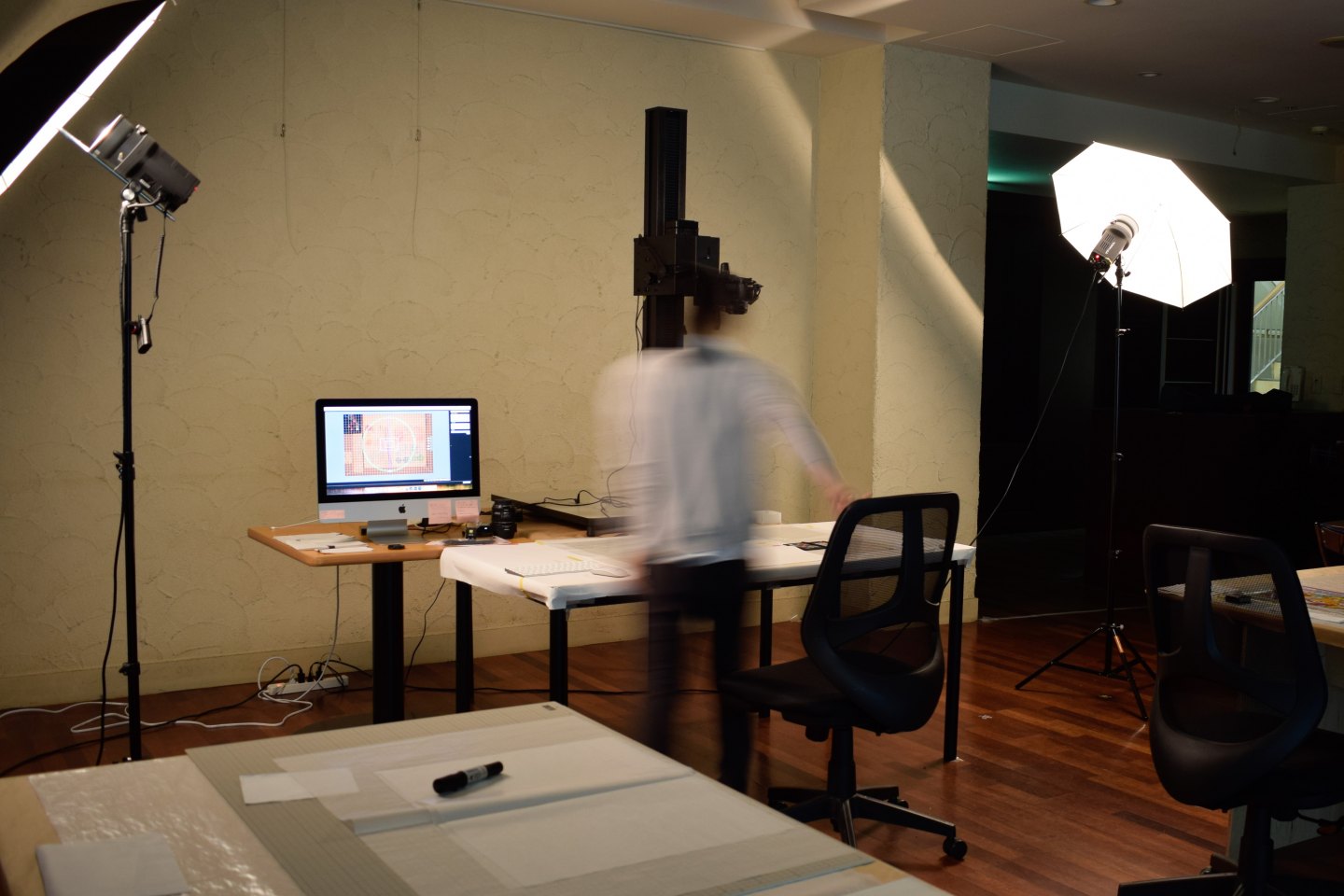
In this column, the staff of this archives production project will explain the flow of the actual archive production process in an easy-to-understand manner. We hope that you will become more interested in not only the online archives, but also this project itself through reviewing each production process of the archives.
1. Author Selection
Candidates are selected from the artists who exhibited their works at the “Kyoto Totteoki Art Festival”*, as well as artists who are suitable for this project from the perspectives of originality and quantity of art work, length of history of artistic expression activity, and diversity of the artist's living area and art style. Following this process, the artists are decided upon after being reviewed by an external expert meeting.
*The “Kyoto Totteoki Art Festival” is an open exhibition organized by Kyoto Prefecture. The festival has been held every year since 1995, and allows anyone residing within Kyoto Prefecture who has a disability to take part in.
2. Surveys/research, loaning works
We ask the selected artists to cooperate with this project and to discuss with the artists, members of the facility and family members of the artists about the process of creating their works thus far. We will take a tour of their production facility, and carry out an inquiry with regards to the motifs and materials used, and borrow their works.
This is a moment in which we make various discoveries that would not have been found only from photographs of their works. The use of unexpected original techniques could also be found, or it’s also possible to find interesting episodes that are not so much related to the work production but could be heard directly from the artist. After all, we feel the importance of actually meeting the artists to listen to their stories, or going to visit their production sites directly.
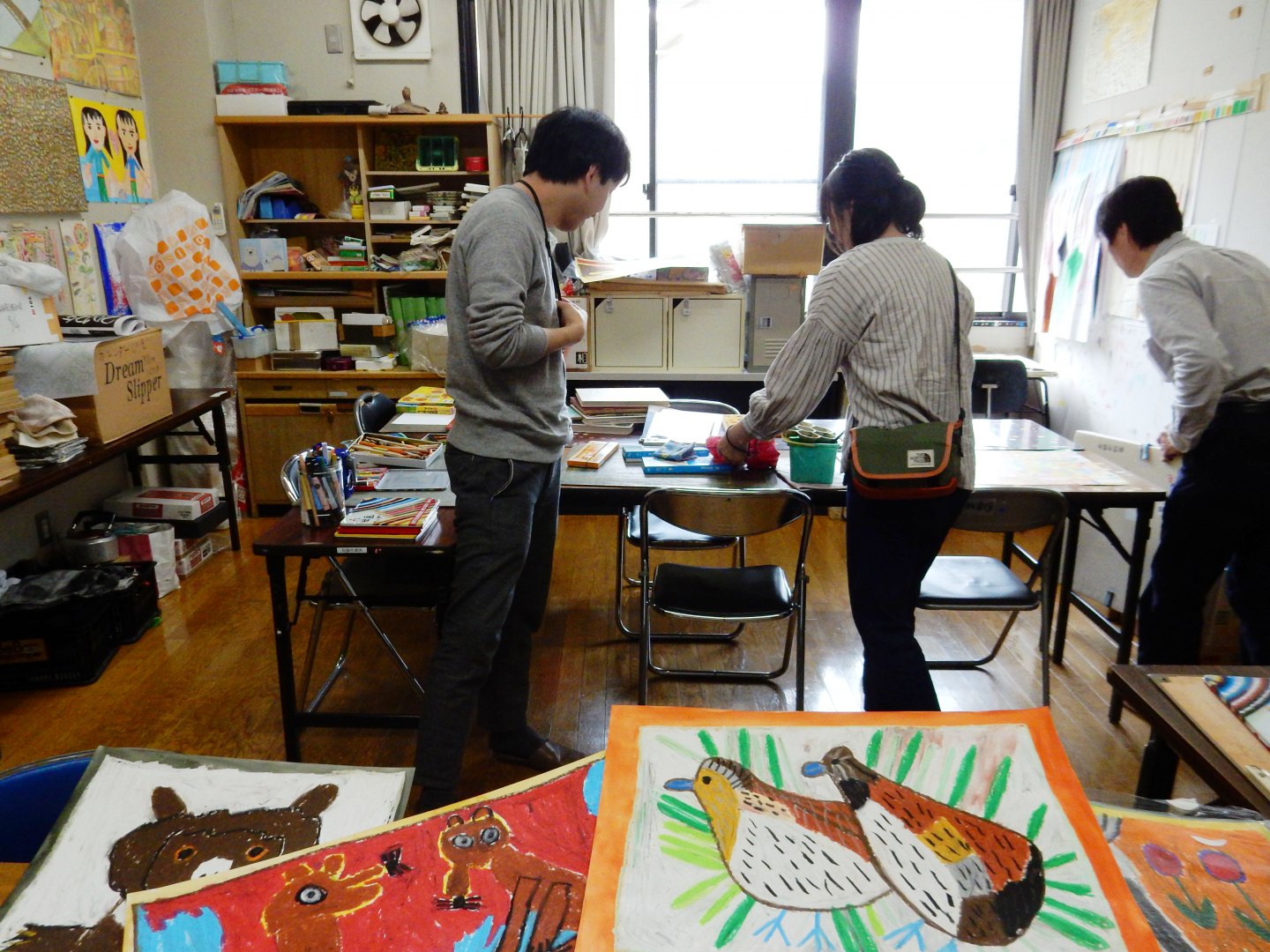
3. Shooting of the artwork/measurements, and data production
We bring the works borrowed from the artist to a studio for shooting and to store them.
First of all, we conduct a measurement of the works and check the materials used. This measurement process includes recording precise sizes in a unit of millimeters as the record will be kept for a long time. The materials are checked based on a visual inspection as well as through the investigation at the time of visiting the artist, and if these materials cannot be identified, they will be confirmed at a later date. We write details about the title, sizes, year of production, material, etc. of each work on a work card prepared in advance. Each piece of artwork will be photographed with this work card.
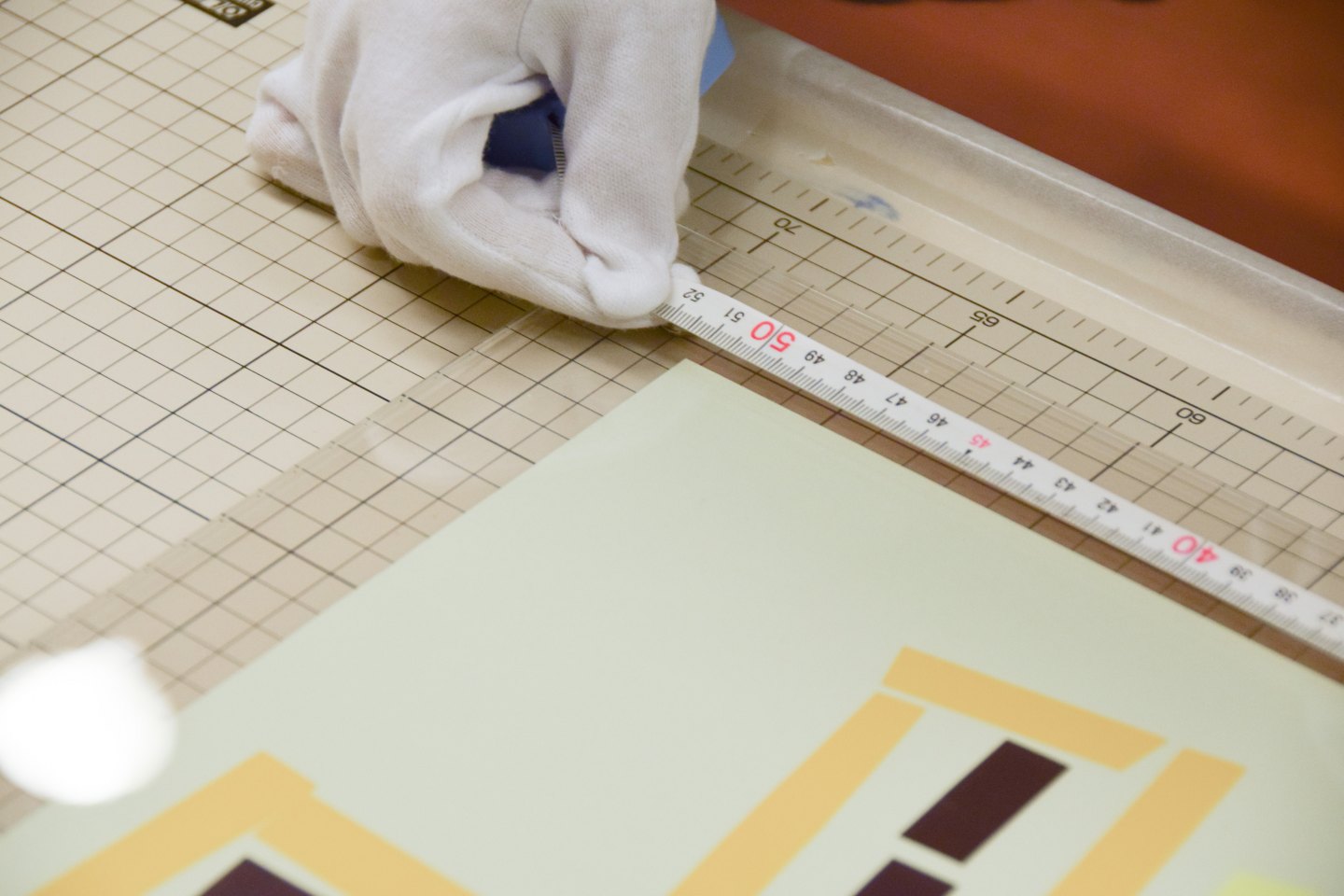
In the case of glossy colors such as gold and silver, the glossiness disappears in a photo, and these glossy colors cannot be distinguished from ocher or gray, therefore, we note this in a remarks column of the work card. We make sure not to forget to check the back of the work to see if there is any note regarding the title or the year of production.

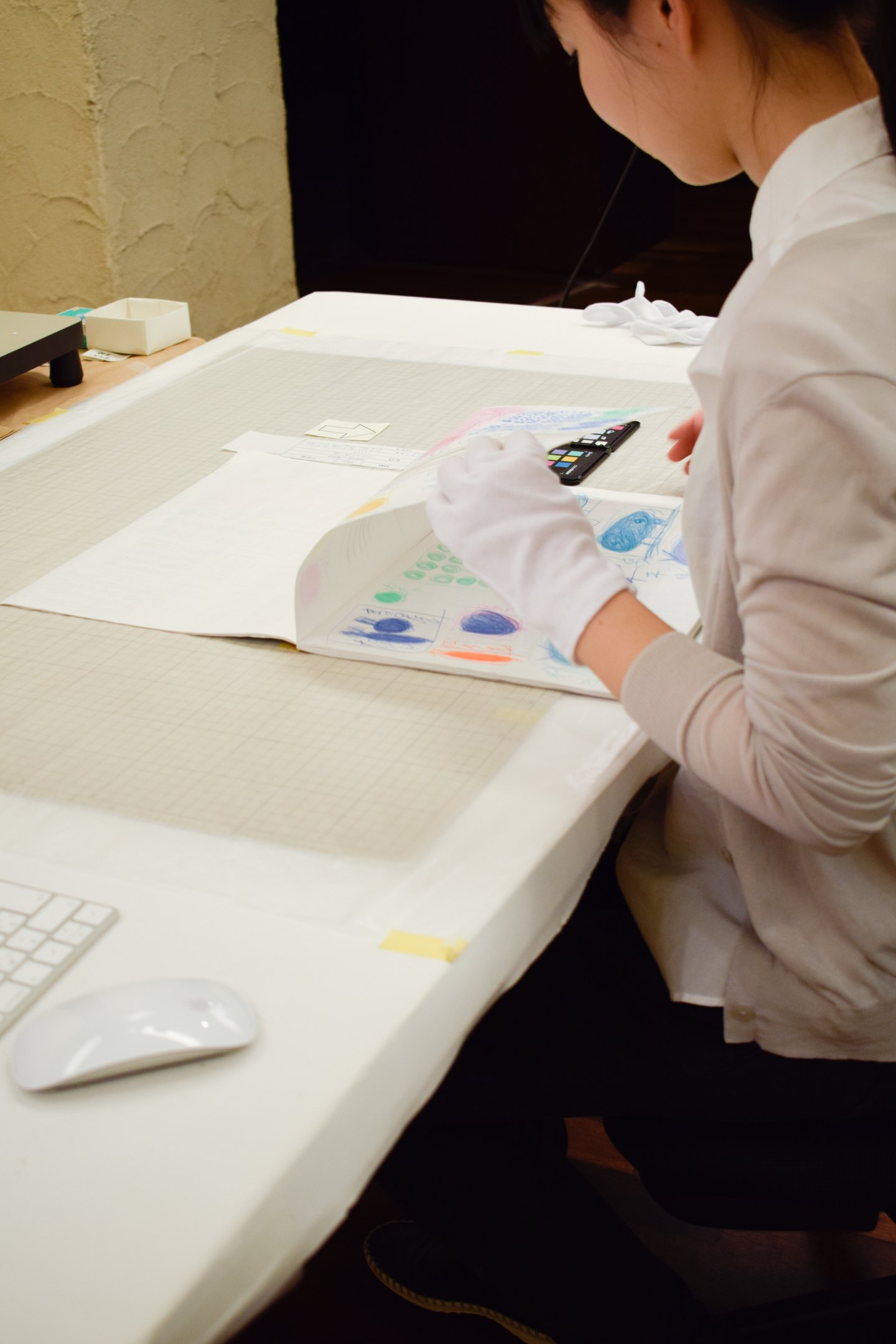
Shooting basically consists of two cuts, the front and the rear respectively, with flat painting pieces being placed horizontally on a shooting table. We shoot each piece with a camera fixed from above. If the work size is too big to fit on the table, then we hang it on the wall and shoot it.
For three dimensional works we use about 8 cuts of the top and bottom, front and rear, left and right, and 2 cuts diagonally. Of these, 2 or 3 shots are posted openly to the public.
A professional photogrpher supervises the shooting, and gives advice when shooting any particular pattern which has never been done before.
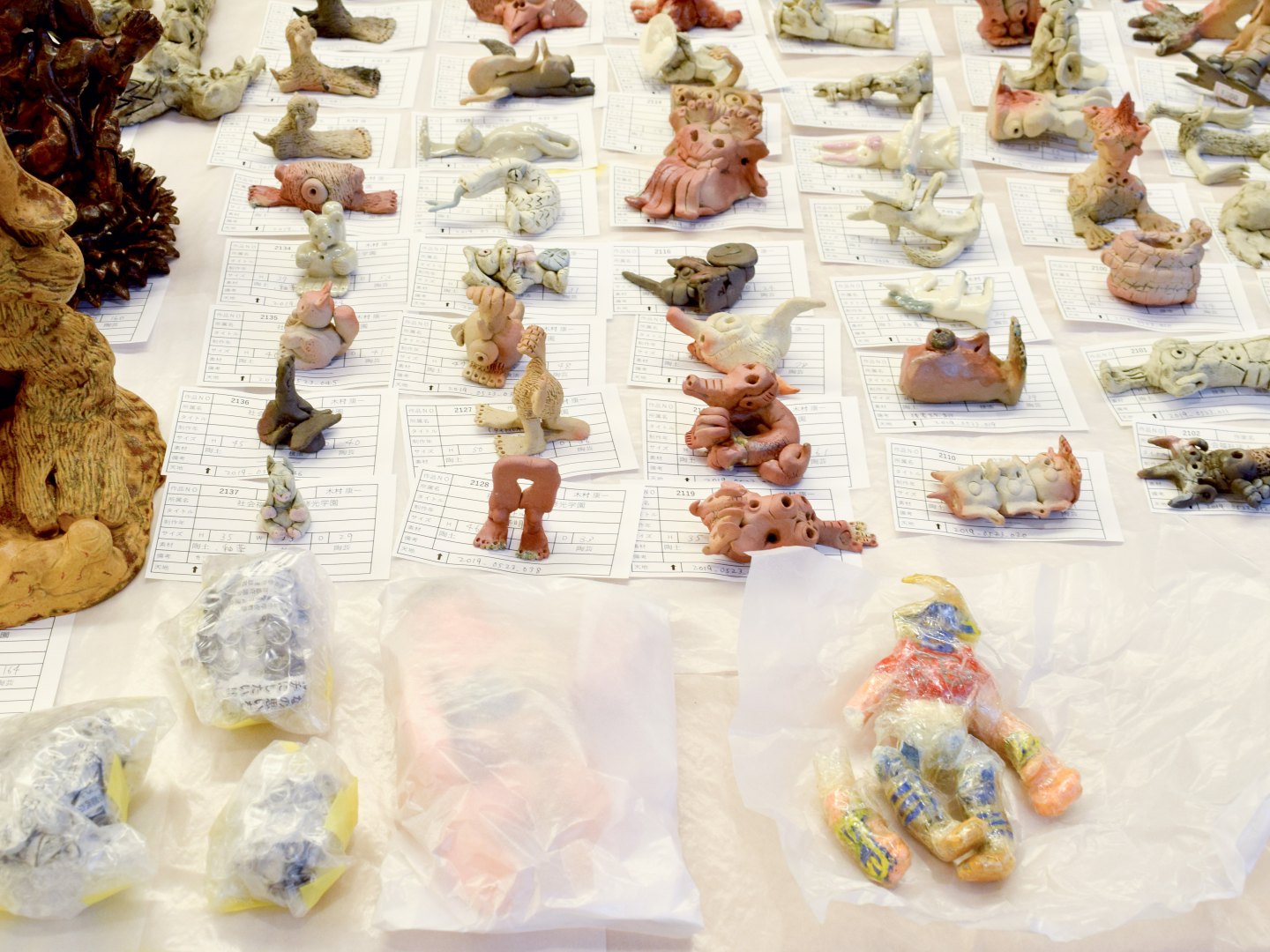

The camera is connected to a computer, and the shoot data is transferred to the computer in real time and checked on a large screen.
Photos are recorded in an uncompressed format called RAW data, and the colors are added using RAW converter software. In this archive, Lightroom from Adobe Systems Inc. is used, and the color is adjusted using the color checker that was imprinted with the work.
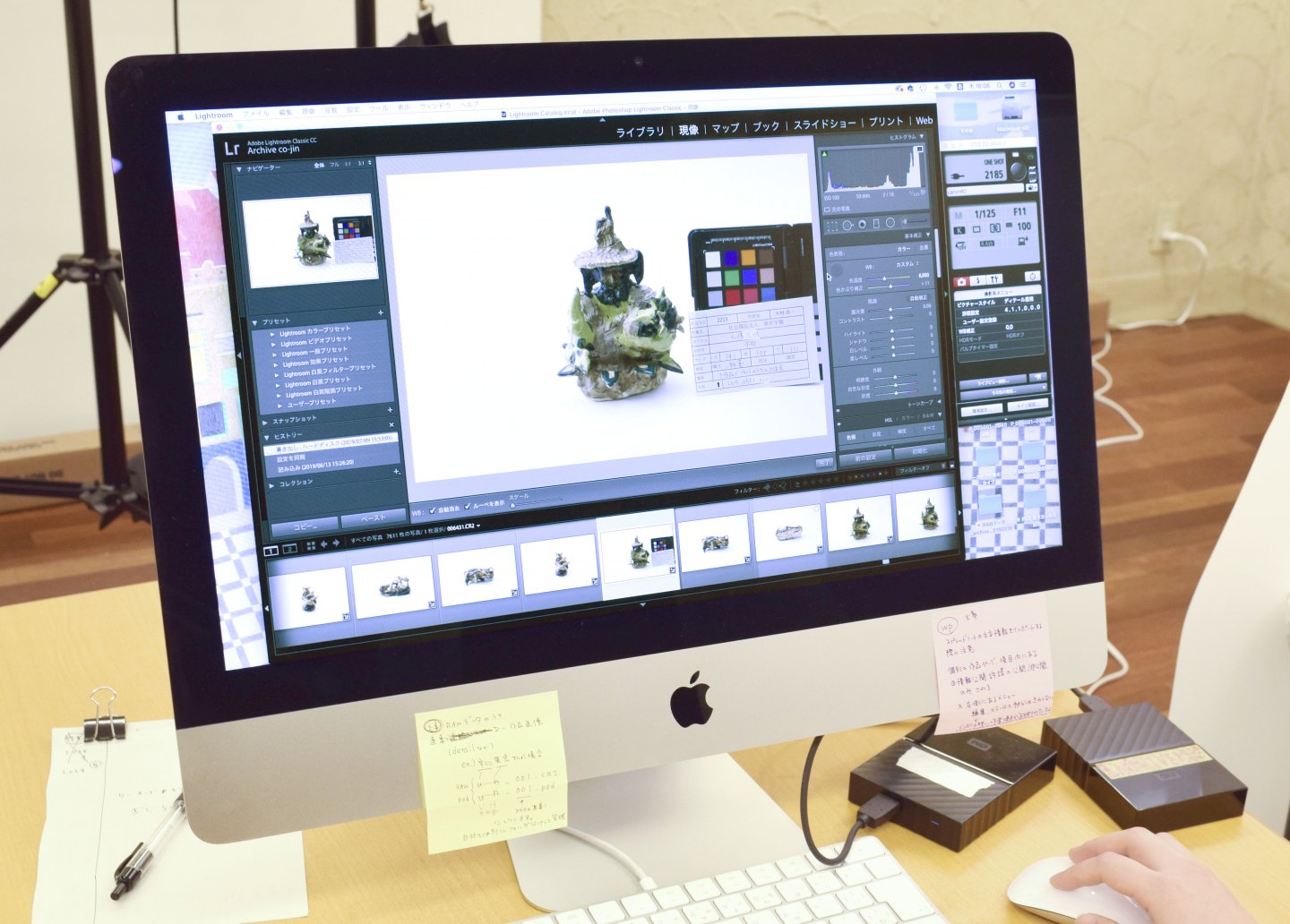
4. Returning of the works・supplementary inquiries
The piece is packaged in a way that is most suitable for preserving the work, and the work is then returned to the artist.
At the same time, we check any unclear points about the work that came out during the archive production process. If there are more specific parts that we would like to ask about regarding the artists or their works, we then conduct additional interviews.
5. Database upload
We upload images of the works to our database. Information listed on the work card and the artists themselves, including profiles, awards, and the like are provided on the database, and made available to the public on the webpage.
Shooting, and the inputting of data is tedious work, but it’s a wonderful moment when we are finally able to witness the organized works in the archive being released to the public at once.
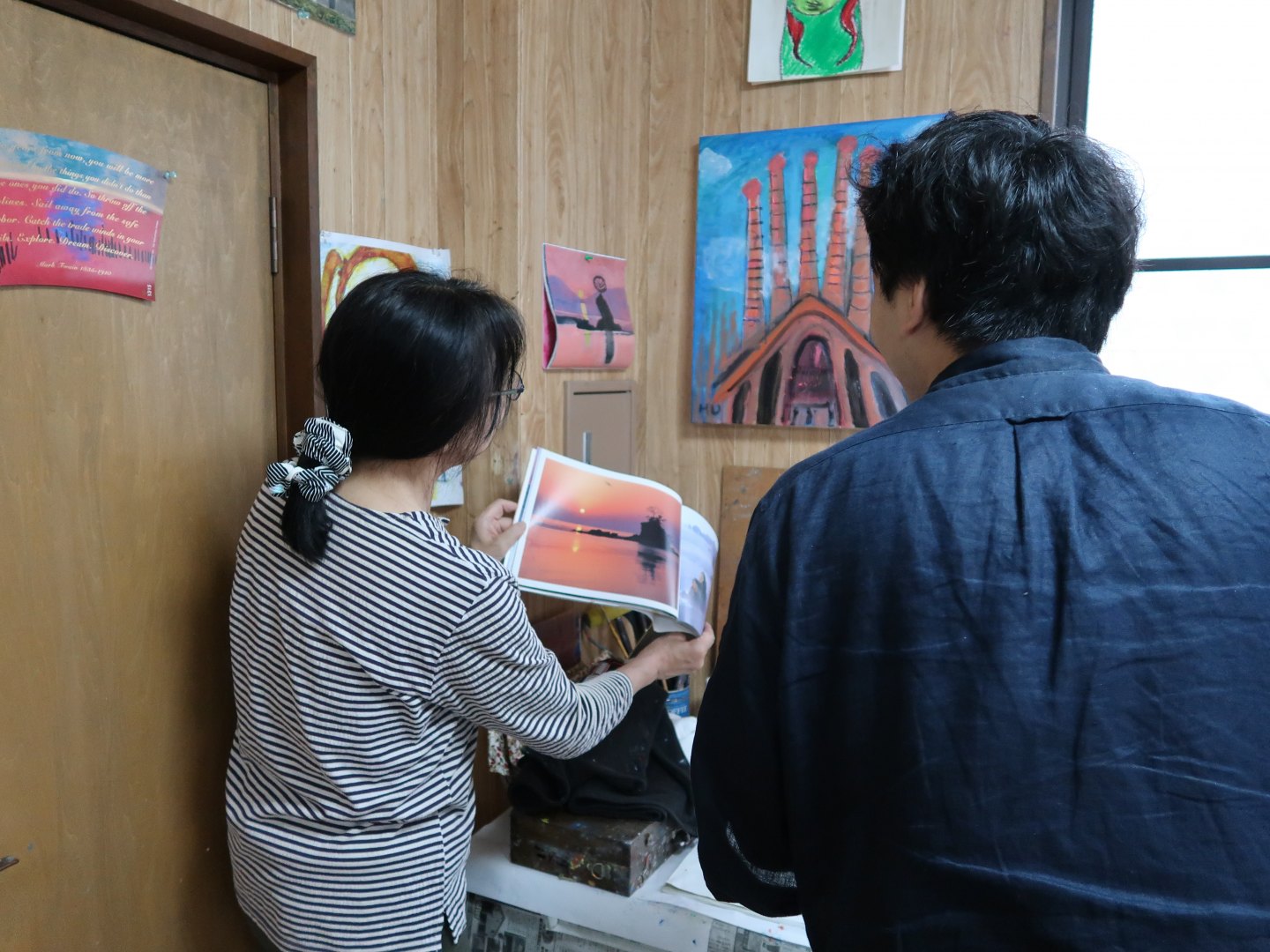
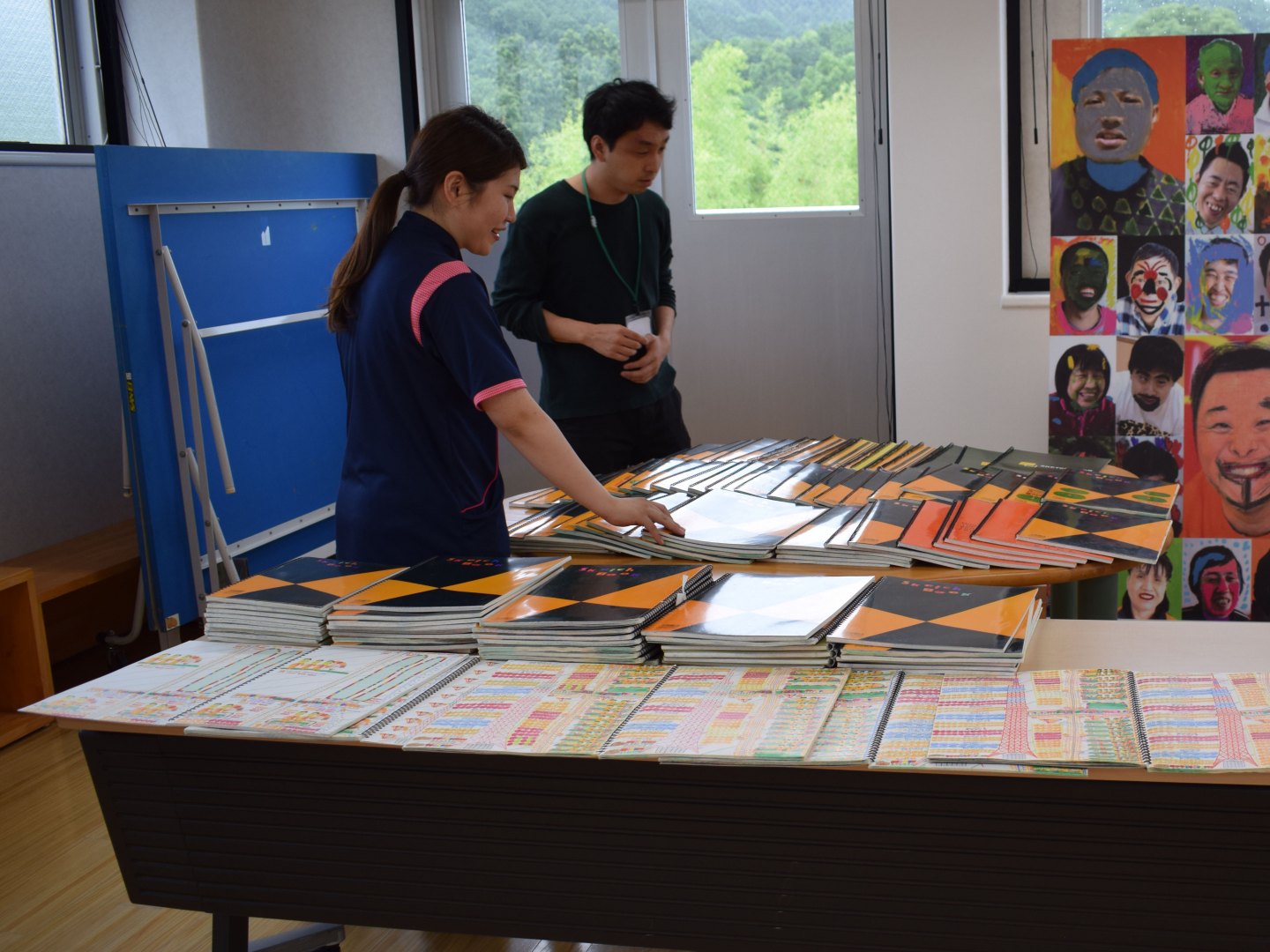
6. Documents
In this archive, it is particularly important to showcase the various works with a fair level of quality. However, there are many things that fall off by themselves. It is sometimes felt that those spillages may contain something important in their own right.
For that reason, we have created a page called "Documents" so that we can record the works and artists in various other ways. Here, we document and showcase to the public the following:
Charms of the artwork that cannot be observed without getting close to or diagonally approaching the work;
Artwork that you may be interested in even if it may not be made by the artist;
Interviews with the artists or related people;
Columns written by experts
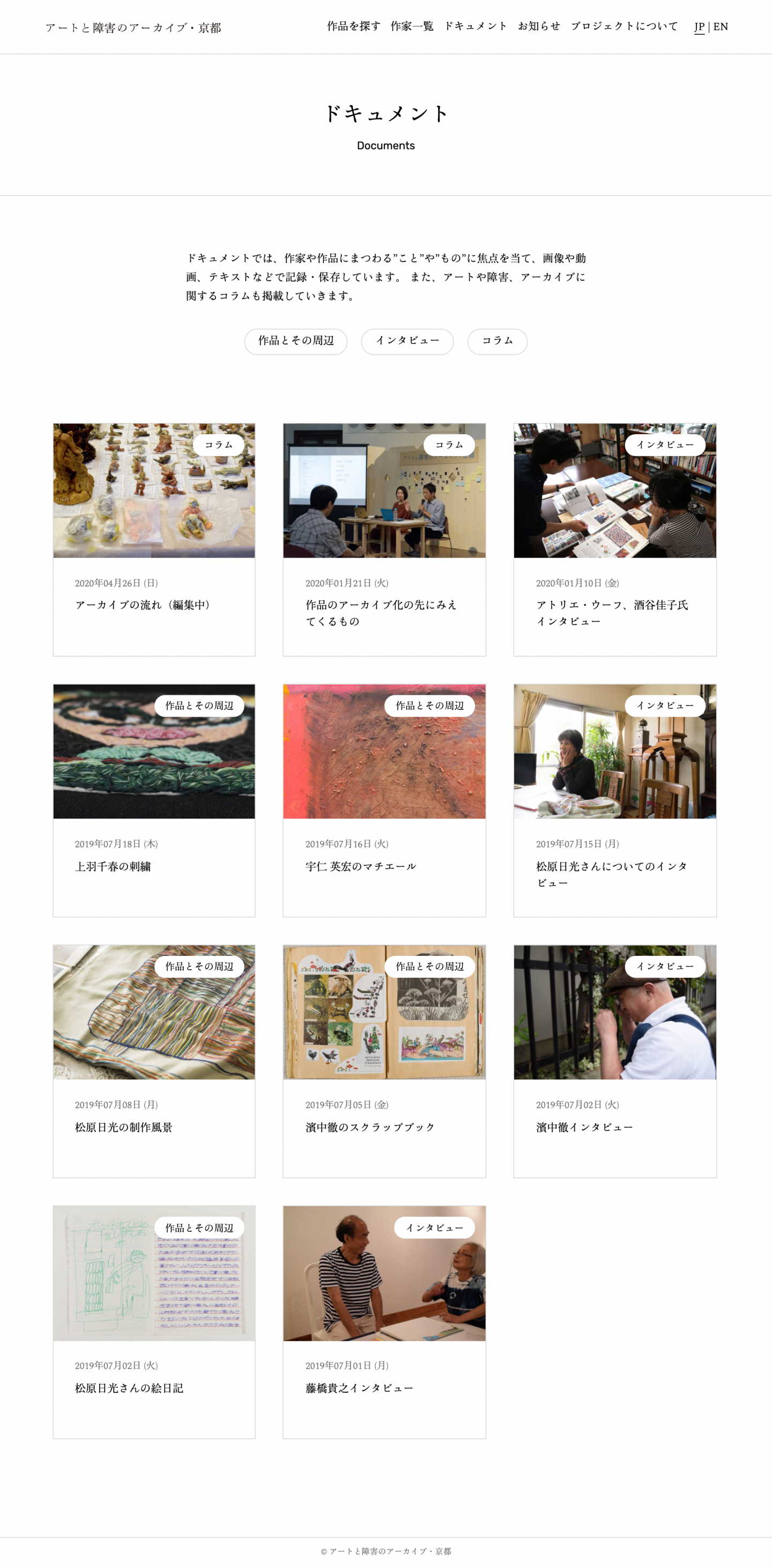

7. Management and updating of the archive
We make this archive through the above flow of the production process. In the future, we plan to add new artists to this archive. For artists whose works are already in the archive, we continue to document and upload such archives with their new works.
Since this is a digital archive, it does not store the actual works, but the advantage of it being digital is that it can be recorded and disseminated without being constrained by time or place. Artists with disabilities are not obstructed when it comes to "expressing," but there are disadvantages when it comes to the dissemination of their works. We hope that this archive will be used as a place to collect information for various people who are interested in welfare and arts while extending a helping hand in this regard.
Inquiries about exhibitions and secondary use of works are gradually increasing. If you are interested, please feel free to contact us by sending us a contact form on the "About Project" page. We welcome your comments and opinions regarding the archive.